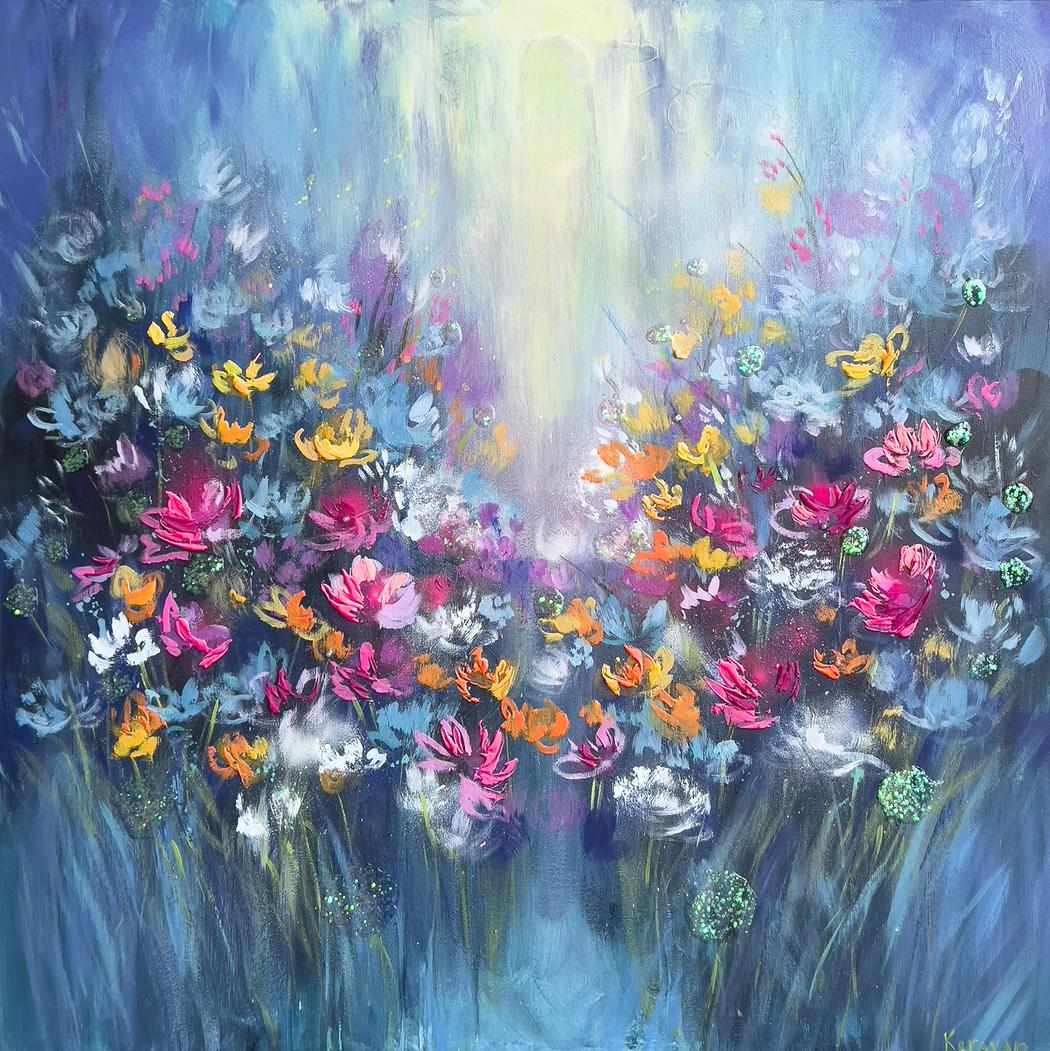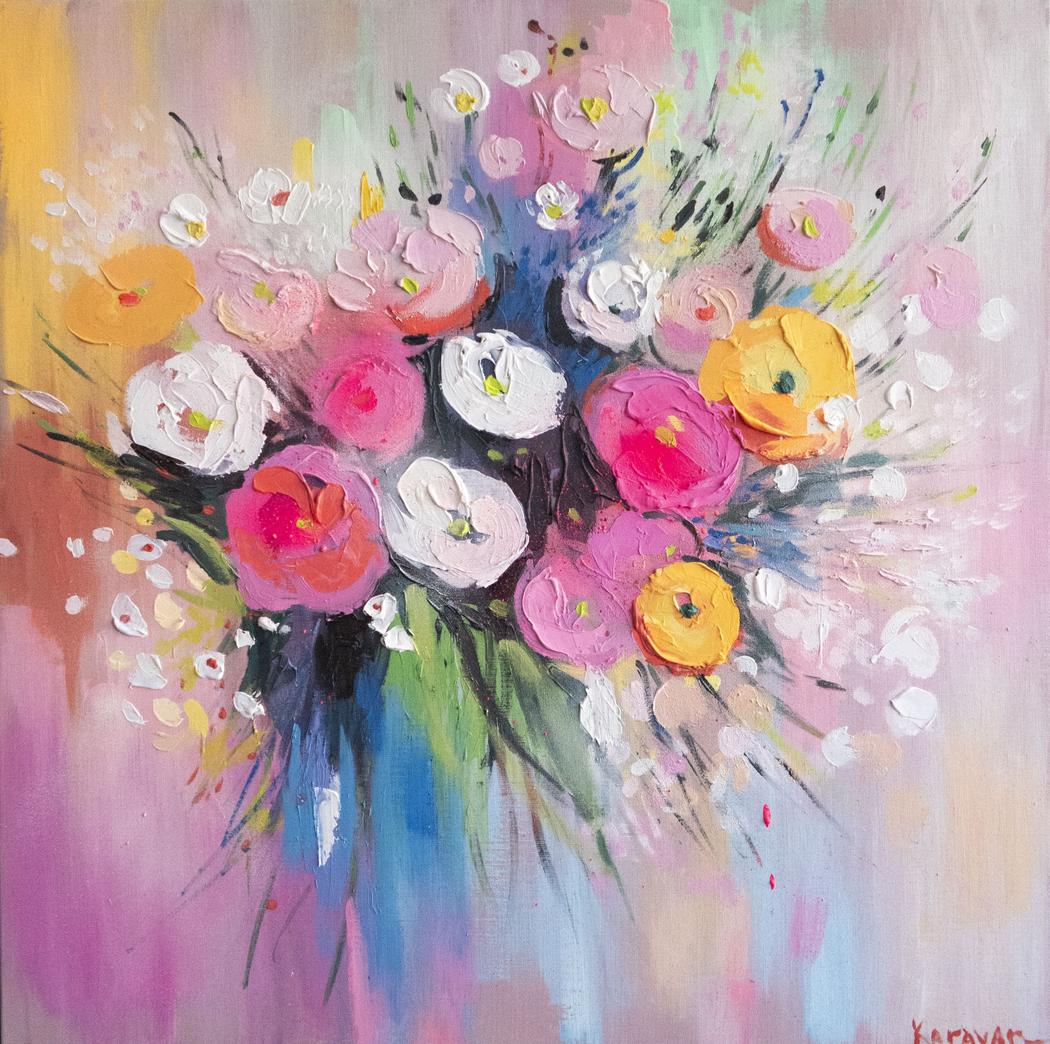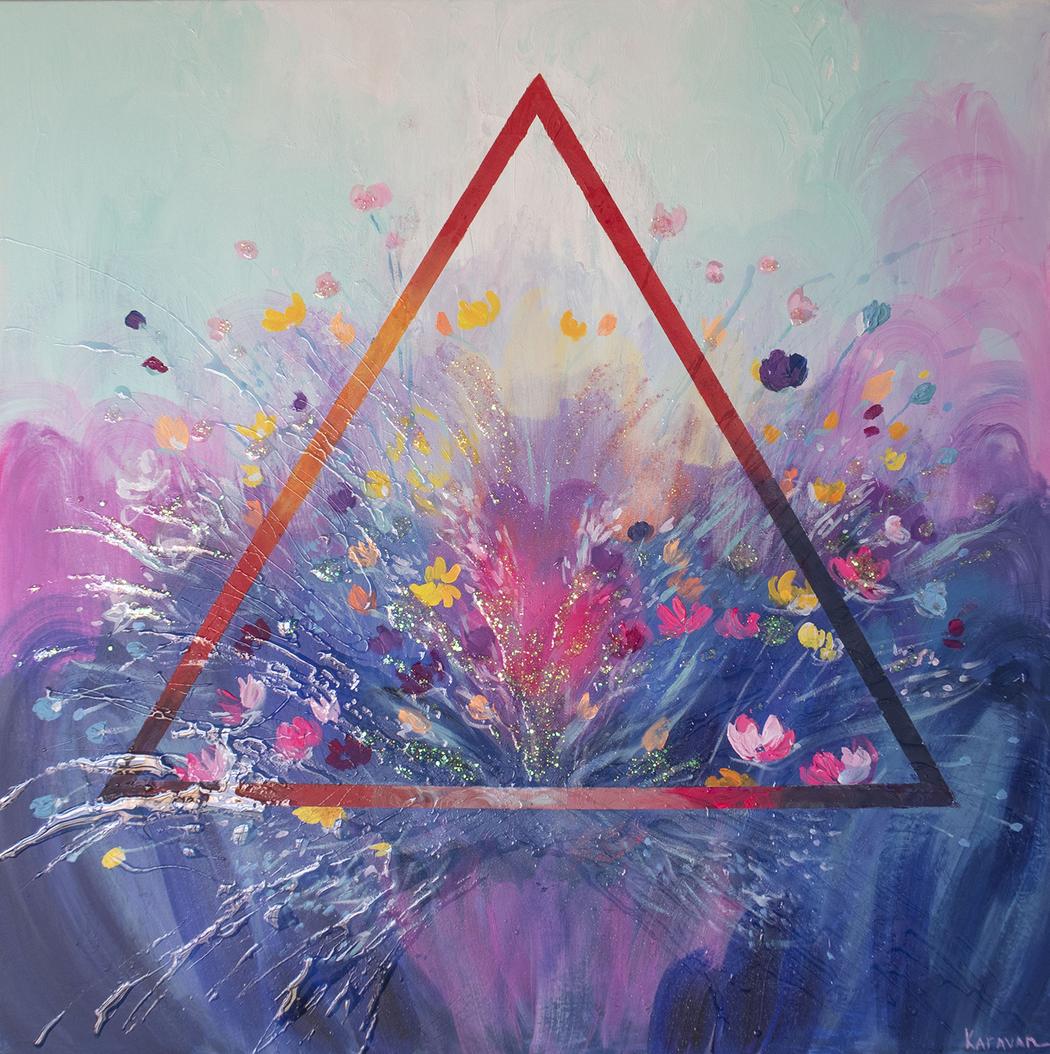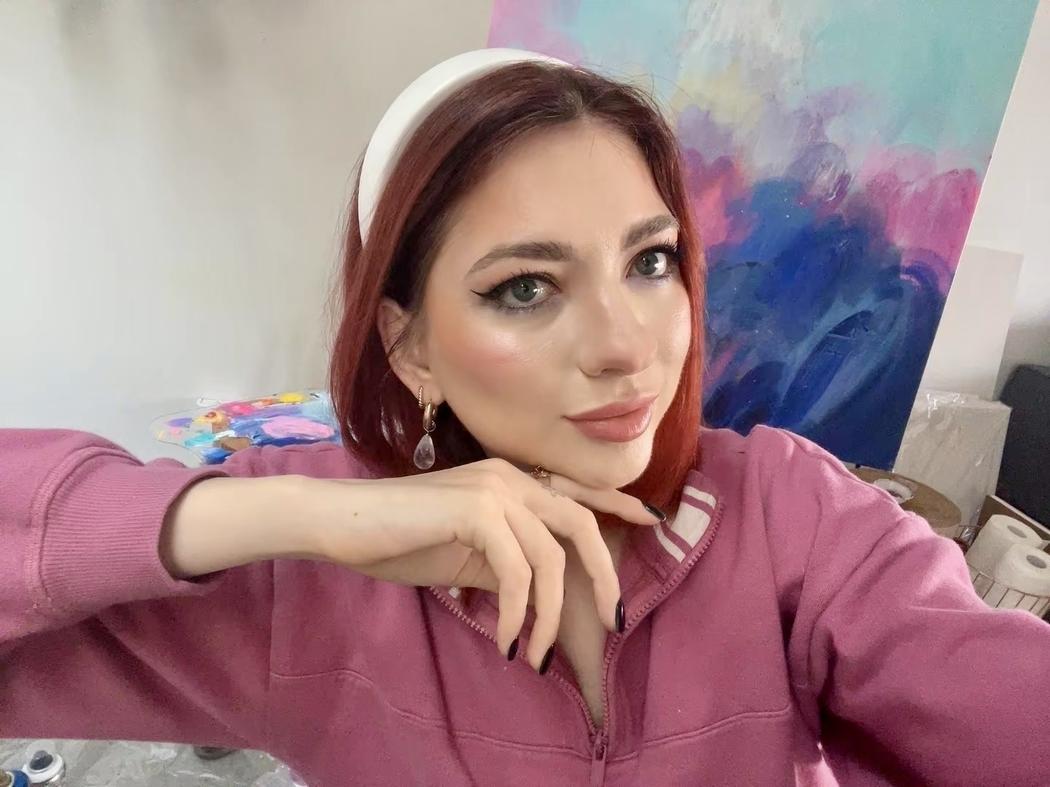Nataliia Karavan
Your artist statement emphasizes “Soft Power: Femininity, Freedom, and Bloom.” What inspired this theme, and how does it manifest across your body of work?
This theme grew out of my personal journey as a woman and an artist navigating change, migration, and self-expression. I believe in the quiet, transformative strength of softness—a kind of power that isn’t aggressive but resilient. “Femininity, Freedom, and Bloom” reflects my belief that vulnerability and sensuality can coexist with independence and inner strength. This message weaves through all of my work, from the titles to the textures and colors.
In pieces like “Small Boobs Big Dreams” and “Oh Honey,” you challenge conventional beauty standards. What reactions or reflections do you hope these bold statements provoke in your viewers?
I want viewers to pause and reflect on how deeply societal standards shape our self-worth. These works are cheeky, playful, and direct, but beneath that, they’re rooted in deeper questions about what it means to take up space as a woman—physically, emotionally, and creatively. I hope they inspire confidence and encourage others, especially women, to embrace the fullness of who they are.
 Nataliia Karavan | Floral Lagoon
Nataliia Karavan | Floral Lagoon
Your technique incorporates oil, acrylic, resin, and spray paint in layered compositions. How do these materials contribute to the emotional intensity and dimensionality of your work?
Each material brings a different energy and texture. Oil gives richness and depth, acrylic offers spontaneity, resin creates a luminous finish, and spray paint introduces raw, unexpected marks. The layering process mirrors emotional complexity—just like us, the paintings hold softness and strength, clarity and chaos. The more you look, the more you discover.
You’ve lived, studied, and taught in London, China, and now Vancouver, after relocating from Ukraine. How have these diverse cultural experiences influenced your artistic voice and perspective?
When I moved from Ukraine, I didn’t just change cities—I changed as a person. Studying in London taught me how to build a solid artistic foundation and develop conceptual ideas. Teaching in China pushed me to communicate through creativity across language barriers. Now in Vancouver, I’m finally painting from a place that feels like healing. My art carries all those stories.
 Nataliia Karavan | Candy Garden
Nataliia Karavan | Candy Garden
Can you share a pivotal moment in your career when color or movement helped you break through creatively or emotionally?
One of the most profound moments in my creative journey happened during a deep meditation—a past life regression session. In that altered state, I saw a clear and vivid image: a series of abstract paintings filled with light, golden tones, and delicate textures. The works I saw were radiant, soft, and full of warmth—almost as if they were breathing. It felt like a glimpse into something I had once created or was meant to bring into existence.
That vision stayed with me long after the session ended. I couldn’t stop thinking about those glowing, abstract forms. It felt less like an idea and more like a memory—a message. That’s when I decided to create a new collection based on what I saw. I will begin working on this abstract series soon. It will be filled with light colors, soft layers, and golden textures inspired directly by that experience.
This vision marked a creative breakthrough. It reminded me that my art doesn’t just come from thought—it comes from memory, intuition, and something beyond this lifetime. The new collection will be a translation of that moment, brought to life through golden tones, movement, and light.
Your work often celebrates the sensual and playful aspects of femininity, yet also explores resilience and self-discovery. How do you navigate this duality in your art?
To me, they’re not opposites—they’re deeply connected. Femininity isn’t only about softness or aesthetics; it also carries the weight of survival, rebirth, and resistance. My art plays with this duality through color choices, layered materials, and recurring symbols like flowers, body shapes, and handwritten phrases. There’s humor and lightness, but also depth and emotional honesty.
 Nataliia Karavan | Lost In The Game
Nataliia Karavan | Lost In The Game
Spontaneity is central to your process. How do you approach knowing when a piece is truly finished?
For me, finishing a painting isn’t a logical decision—it’s a feeling. Because my process is so intuitive and layered, I have to sense when the energy of the work is balanced. I often step back, observe, and wait for that quiet moment when nothing feels forced and the painting holds its own presence. That’s when I know it’s done.
Sometimes it happens quickly, and other times it takes weeks or even months of adding, scraping, and reworking. But I’ve learned to trust that moment when the piece no longer needs me—it feels whole, like it’s breathing on its own. That’s the beauty of spontaneity: it teaches you to listen, not just act.


Leave a Reply